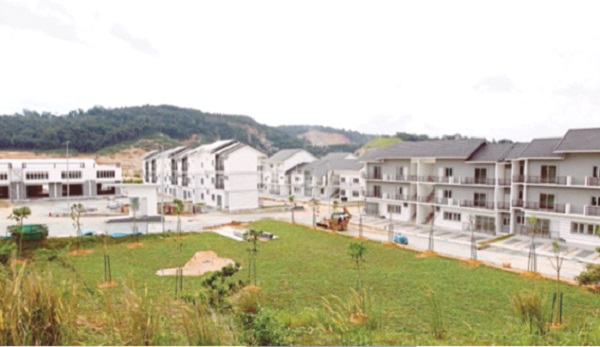

More affordable houses won’t solve affordability issue
Published on: Monday, July 22, 2019
Text Size:

This is because, in order for a project to kick-start, the industry needs to be prepared to deliver houses on land allocated for the affordable housing project; and most importantly, the project must be profitable. This immediately presents a barrier to delivering affordable housing.
In common practice, developers will assume land cost as 20pc of the gross development value (GDV). From there, the expected GDV is determined and the respective development costs are estimated. With the current planning requirements in place, developers will work out the maximum selling price of properties in order to deliver a housing unit just slightly under the cost of buying an established dwelling in the local market.
If the resulting profit margin is satisfied after deducting costs of development, the project will likely be carried out; otherwise, the property selling prices will be adjusted to ensure the acceptable level of profit margin is achieved (normally ranging from 10pc to 15pc).
There is very little a developer can do with the land cost, especially in urban prime land areas. Also, there is little scope to reduce the profit margin since the housing development industry requires a return to compensate for the risk of undertaking-high-cost activities.
In this sense, affordable housing requirement tends to serve as a barrier that limits the amount of revenue the land can generate, leading to a loss that developers have to bear with when building affordable housing.
Given this arrangement, the construction of affordable housing is only viable through cross-subsidisation by taxing on free-market houses.
The commercially rational response by developers is to build high-end houses (RM500,000 and above) rather than "immediate affordable houses" (RM300,000 to RM500,000), since the development of affordable housing is imposed on all projects regardless of land suitability and the selling price of free-market housing.
As a result, over-priced houses dominate the free-market housing segment and the so-called "mandated affordable housing schemes" are actually subsidised by imposing a tax on free-market housing buyers.
Assuming that a development is carried out it Semenyih (Zone 1) on land of over 50 acres which is mandated to have 40pc Rumah Selangorku (RSKU) housing type A, B, C and D, with the selling price of RM42,000, RM100,000, RM200,000 and RM250,000 respectively.
The actual development cost of an RSKU unit is higher than its capped selling price hence, cross-subsidisation is required for the construction of every RSKU unit. In this case, the total subsidy of RM211,000 for the 40pc RSKU units will be borne by the remaining 60pc free-market products, with a tax on each free-market unit amounting to RM42,200.
Subsidising social housing for the poor and affordable housing for the lower- and moderate-income group may be defended on the ground of social justice, but the impact of the implicit tax on the free-market houses is inequitable.
Whether the free-market houses are sold at RM350,000 or RM1 million, they must support an equal number of subsidised housing, which is just 4.2pc of the selling price of a RM1 million luxury house, but a tax rate as high as 12pc for a modest RM35,000 terrace house.
As a result, there is a tendency of launching high-end houses among developers.
Following the domination of high-md houses in the market, a drastic increase of overhang in this housing segment is observed, which is then claimed as the main contributor to the affordable housing crisis.
This phenomenon should not be viewed as merely a skewed-market in favour of building expensive houses by profit-seeking developers, but a structural problem of housing delivery system caused by the government's affordable housing policy.
Policy makers tend to treat affordable housing as "a separate housing category that aims to help those who are deserving of aid'. However, affordable housing does not t necessarily mean the house or t the project itself. It actually refers to the fact that one is spending less than 30pc his/her post-tax on housing.
Houses are perceived as unaffordable due to the imbalance in income growth versus house prices growth that have potentially created a massive wedge between house prices and development costs.
To complete the picture in solving the affordability crisis, the government should address the issue that the people cannot afford to own a house with the current economic state and income level.
Instead of building more and more affordable housing -which has proven to cause middle-income house buyers to suffer more by cross-subsidising lower-income group - the government should look into policies that can improve people's wealth and purchasing power. – TheSun
This article was contributed by Arkitek M Ghazali principal Mazlin Ghazali and MKH Bhd manager of product research & development Dr Foo Chee Hung.






